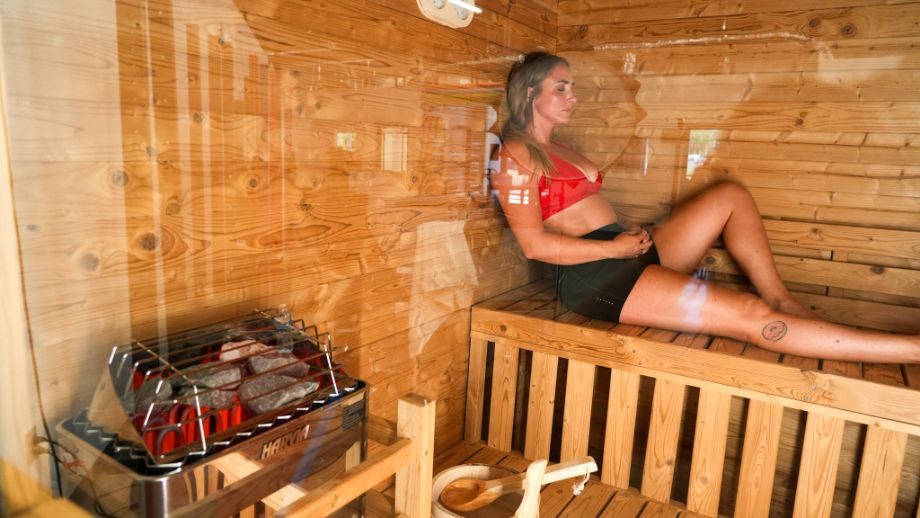We test and review fitness products based on an independent, multi-point methodology. If you use our links to purchase something, we may earn a commission. Read our disclosures.
Looking into the best home saunas for post-workout muscle recovery or stress relief? You may be wondering what the differences are between dry and wet saunas—or what each term even refers to. Both can offer a suite of positive effects on your well-being, but one type of sauna may hold additional benefits over the other. In this guide to wet sauna vs dry sauna, we’ll look at the health benefits of each and what to consider if you want a sauna for your home.
What Is a Dry Sauna?
A dry sauna is probably what you picture when you think of a regular sauna: a small room lined with wood, an electric stove or heater situated inside, perhaps with some hot rocks on top. This type of sauna operates at a very high temperature with low humidity—160 to 200 degrees fahrenheit with 10 to 20% humidity.
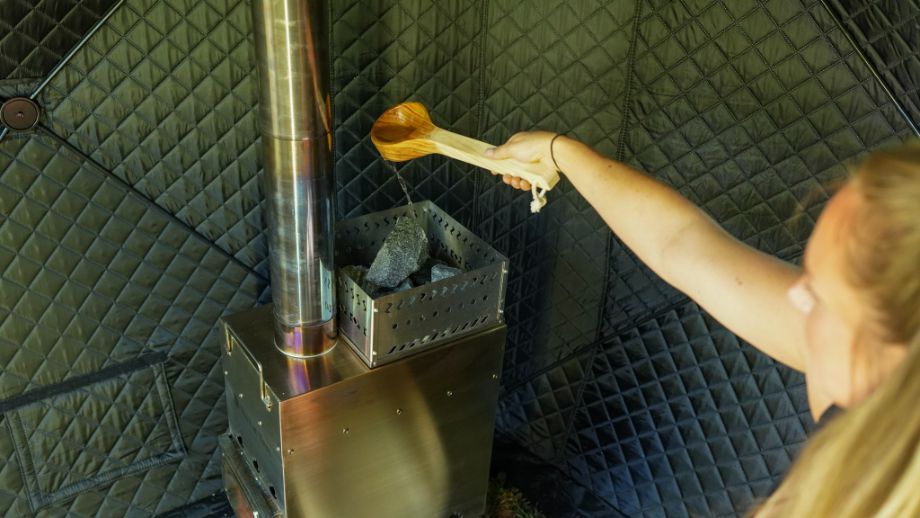
What Is a Wet Sauna?
Wet saunas don’t just involve hot air. As you can probably guess from the name, wet saunas, also called steam rooms, involve very humid air. They utilize steam generators and wet sauna temperatures hover around 100 to 120 degrees with 100% humidity.
RELATED: Steam Room Benefits
Dry Sauna Health Benefits
Many people turn to sauna bathing for benefits like relief from pain or soreness, loosening up tight muscles, alleviation of stress and anxiety, and improved sleep. As simple as sitting in a small, hot room sounds, scientific literature shows promising results around the benefits of saunas.
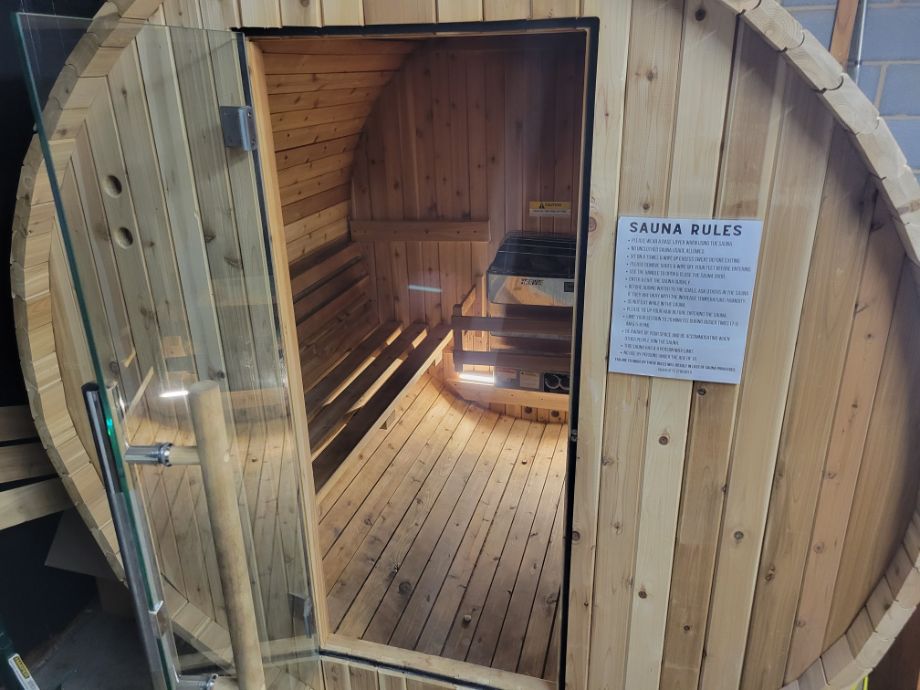
Dry saunas in particular are associated with the following benefits:
- Possible positive effects on cardiovascular health, including a lower risk of high blood pressure and heart failure1
- Athletic performance enhancement, likely due to increased blood flow and volume2, as well as heat acclimatization3
- Relief from sore and tight muscles4
- Possible improvements in sleep quality and quantity5
Learn more about these positive effects in our guide to dry sauna benefits.
Wet Sauna Health Benefits
For the most part, wet saunas impart the same benefits as dry saunas: possible reduced risk of heart disease, lower blood pressure, stress relief, and potential improvements in athletic performance, mood, and sleep.
However, the high humidity level means wet sauna use offers some unique benefits, despite not reaching the higher temperatures that dry saunas do.
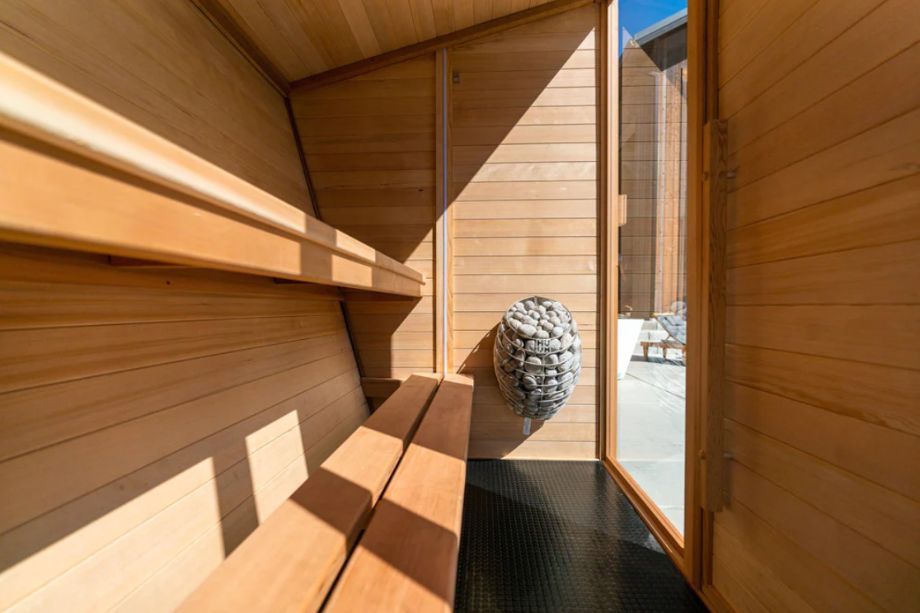
For instance, steam rooms have been associated with a beneficial effect on skin health. Particularly, the humid heat may help relieve symptoms from skin conditions characterized by dry, flaky, itchy skin, such as psoriasis, according to research in International Journal of Dermatology6.
RELATED: Are Saunas Good For Your Skin?
Steam rooms may also alleviate congestion when your immune system is knocked down by a pathogen or allergen. According to 2016 research in the Canadian Medical Association Journal7, inhaling steam was shown to loosen mucous membranes and relieve headaches associated with sinus pressure.
Considerations for Home Saunas
If you’re looking into saunas for your home, there are a few things to know before purchasing one.
For one, steam rooms require more maintenance than dry saunas due to the moisture. More moisture means more potential for mildew and mold growth, so upkeep should be taken seriously. Steam rooms generally aren’t as easy to install for home use because they typically require plumbing and venting, too.
Traditional dry saunas are more common in private homes because they’re easier to install and don’t pose as much of a risk regarding mold.
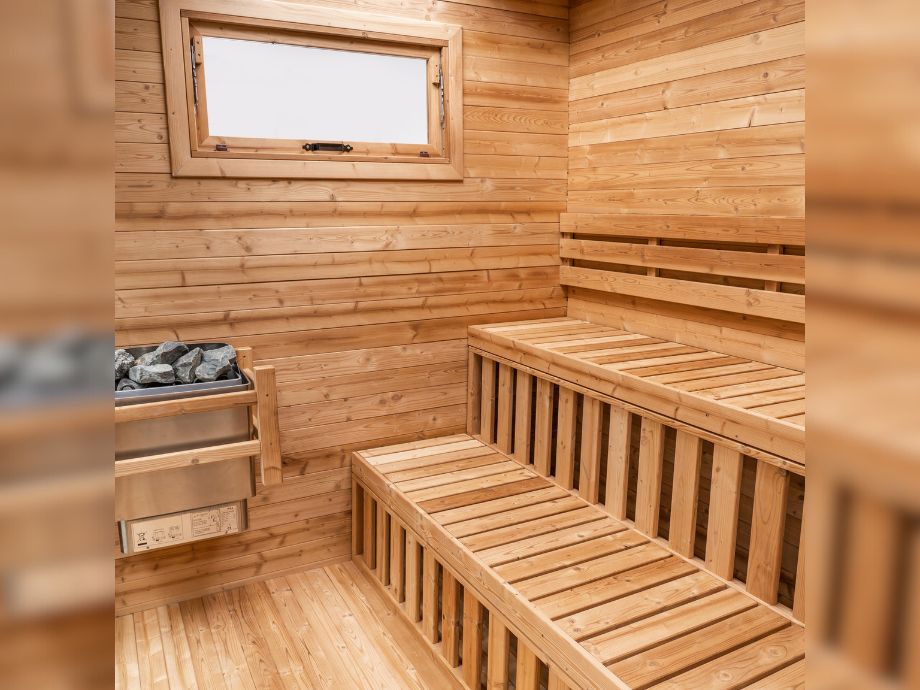
Pro tip: If you only have access to a dry sauna experience but want a steam room experience, you can pour water over the heated rocks to create a steamy effect. Just be careful to pour the water slowly and stand back as the steam rises so you don’t burn yourself. Also, consider leaving the door to the sauna open for about a half hour after steaming it so moisture can escape.
Learn more about the differences in our guide to steam rooms vs saunas.
Wet Sauna vs Dry Sauna: Final Thoughts
At the end of the day, the answer to the dry vs wet sauna debate ultimately depends on personal preference, including the specific health benefits you’re after.
One big callout is that the dry heat of traditional saunas may irritate the skin of people with conditions such as psoriasis and eczema, whereas the moist heat of a steam sauna may relieve symptoms associated with such conditions. Additionally, steam baths can improve drainage of the sinuses and relieve
No matter which type of sauna session you choose, don’t forget to hydrate and follow best practices for how to use a sauna.
Wet Sauna vs Dry Sauna: FAQs
Do wet saunas grow mold?
More moisture always means a higher risk of mold and mildew, but if you take care of your sauna according to the manufacturer’s instructions, you shouldn’t have any problems with this. Vented steam rooms have a lower risk of mold growth, and leaving the sauna door open for a bit after your session can help, too.
Does a dry or wet sauna make you sweat more?
Sweat rate is highly individual, so it’s hard to say objectively if one type of sauna results in greater sweat loss than the other. In a wet sauna, you will likely feel like you’re sweating more, even if you’re not, because the high humidity doesn’t allow any sweat to evaporate. This keeps it clinging to your skin.
Is a dry sauna the same as an infrared sauna?
Infrared saunas are a type of dry sauna, but they work differently. Instead of heating the air around you, infrared saunas use infrared light to directly heat your body. This is associated with some different potential benefits and drawbacks, which you can learn about in our guide to infrared sauna benefits.
Do saunas help with weight loss?
When you sit in a sauna room, your heart rate and body temperature increase, which results in your body burning more calories sitting there than it would sitting in a room at a normal, lower temperature. However, any weight loss that you notice immediately after sauna bathing is due to water loss from sweating. The increase in metabolism while in a sauna is negligible compared to calories burned from exercise or simply your resting metabolic rate.
RELATED: Does the Sauna Burn Calories?
References
- Laukkanen JA, Laukkanen T, Kunutsor SK. Cardiovascular and Other Health Benefits of Sauna Bathing: A Review of the Evidence. Mayo Clin Proc. 2018;93(8):1111-1121. doi:10.1016/j.mayocp.2018.04.008
- Scoon GS, Hopkins WG, Mayhew S, Cotter JD. Effect of post-exercise sauna bathing on the endurance performance of competitive male runners. J Sci Med Sport. 2007;10(4):259-262. doi:10.1016/j.jsams.2006.06.009
- Kirby NV, Lucas SJE, Armstrong OJ, Weaver SR, Lucas RAI. Intermittent post-exercise sauna bathing improves markers of exercise capacity in hot and temperate conditions in trained middle-distance runners. Eur J Appl Physiol. 2021;121(2):621-635. doi:10.1007/s00421-020-04541-z
- Khamwong P, Paungmali A, Pirunsan U, Joseph L. Prophylactic Effects of Sauna on Delayed-Onset Muscle Soreness of the Wrist Extensors. Asian J Sports Med. 2015;6(2):e25549. doi:10.5812/asjsm.6(2)2015.25549
- Hussain JN, Greaves RF, Cohen MM. A hot topic for health: Results of the Global Sauna Survey. Complement Ther Med. 2019;44:223-234. doi:10.1016/j.ctim.2019.03.012
- Moini Jazani A, Ayati MH, Nadiri AA, Nasimi Doost Azgomi R. Efficacy of hydrotherapy, spa therapy, and balneotherapy for psoriasis and atopic dermatitis: a systematic review. Int J Dermatol. 2023;62(2):177-189. doi:10.1111/ijd.16080
- P. Little, B. Stuart, M. Mullee, T. Thomas, S. Johnson, G. Leydon, D. Rabago, S. Richards-Hall, I. Williamson, G. Yao, J. Raftery, S. Zhu, M. Moore. Effectiveness of steam inhalation and nasal irrigation for chronic or recurrent sinus symptoms in primary care: a pragmatic randomized controlled trial. CMAJ September 20, 2016 188 (13) 940-949; DOI: https://doi.org/10.1503/cmaj.160362
Further reading

Protein shakes are a convenient way to meet your protein goals, but how many protein shakes a day should you consume? We’ll discuss what you need to know! Read more

Read this before wasting your money on weight loss pills that don’t work or might be dangerous. Read more

This lightweight and portable system could be exactly what your home gym needs. We’ve got an exclusive Harambe System Promo Code for 10% off your purchase. Read more

Check out our nutrition experts’ Organifi Green Juice review to see whether this popular greens powder is worth your hard-earned money! Read more

